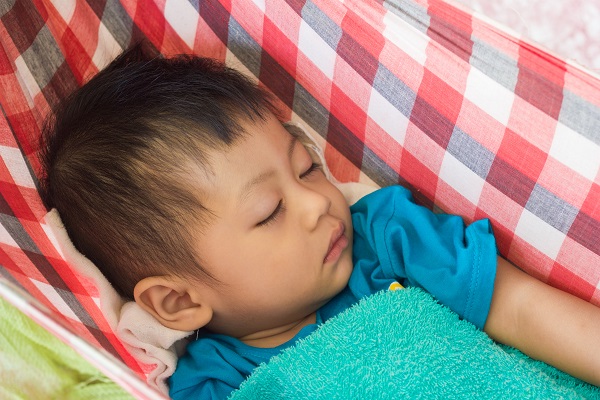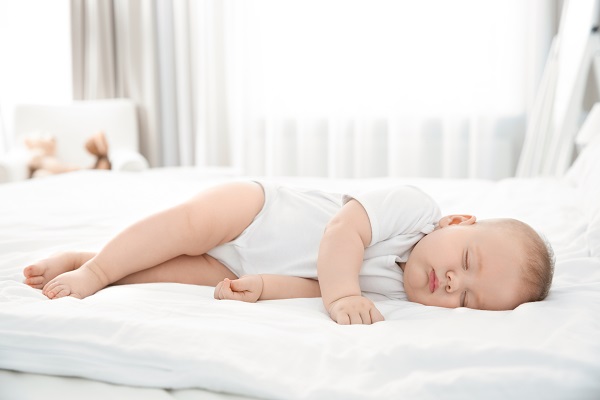- เกี่ยวกับเรา
- ผลิตภัณฑ์
- EXPLORE
- ประเภทผลิตภัณฑ์
- กลุ่มผลิตภัณฑ์
- ประเภทผิว
- บทความการดูแลลูก
- สั่งซื้อออนไลน์
- ติดต่อเรา
- สมัครสมาชิก
- เบบี้มายด์คลับ
- Power of Gentle Touch
- บทความการดูแลลูก
- บทความแนะนำโดยแพทย์ผู้เชี่ยวชาญ
- Baby Crib or Mattress? What are Advantages and Disadvantages?
Baby Crib or Mattress? What are Advantages and Disadvantages?

There are many types of baby equipment. Some parents have their baby shared the bed with them while the others place a baby cushion on the floor, use a baby crib, or have them sleep on a mat or in a hammock. There's news about baby’s death from falling off the bed, head stuck between the railings until the brain lack of oxygen, or baby falling off a hammock and have a severe head injury. Choose a bed suits your baby’s age is also crucial for parents. This is a list of what’s to be considered when buying a bed for your baby.
- Bed higher than 120 centimeters causes higher chances for your baby head injury. (If the bed is lower than 90 centimeters, many researches show that the accident is less severe. Parents may put the child on a cushion on the floor to avoid them rolling off the bed.) Space between each railing of a crib should be less than 6 centimeters. More than that, there’s a chance that your baby might stretch a part of the body out and stuck. Their limbs might come out, but the head will be stuck since it’s the largest circumference of the body. If stuck in the head hanging manner, the baby might be death within 4 minutes.
- In children age under 5 months, if an adult is in attendance all the time, use a hammock or a rocking bed, and the baby’s face must be turned up only. The bed should not be too high, and the rocking should be gentle. Do not swing too hard. Be careful that the baby won’t fall from the hammock. If the child grows enough to sit by him/herself, it’s not recommended to use a hammock because the accident can happen easier.

- The mattress should not be too soft or too hard. The cover should be tight. No dolls, side pillows, or large pillows that might press one baby’s face or bind around the neck.
- Sudden Infant Death Syndrome (SIDS). Although the cause is unclear, it’s believed that there’s relationship with sleeping factors like beddings, soft materials, pillows, or blankets blocking the respiratory tract, or due to the suffocation from the pressure in the baby sharing bed with parent. In order to prevent this condition, the baby’s bed should be solid. Do not place a soft pillow or blanket on a bed. The CDC (Centers for Disease Control and Prevention) suggests that the baby shouldn’t share the bed with their parents, but they can sleep in the same room with a separate baby's bed.
In addition, the room temperature shouldn’t be too hot nor too cold, and not too bright. Sleeping clothes should be comfortable and fit the baby well. These things can help them sleep longer and deeper.
ครีมอาบน้ำเด็ก
แป้งเด็ก
สบู่ก้อน
โลชั่น ครีมทาผิวเด็กและเบบี้ออย
สบู่เด็ก
แชมพูเด็ก
น้ำยาซักผ้าเด็ก
น้ำยาปรับผ้านุ่มเด็ก
น้ำยาล้างขวดนม
ชุดของขวัญ
ผลิตภัณฑ์สำหรับผู้ใหญ่
จันทร์ – ศุกร์ ( 08.00 น. – 17.00 น. )
โทร : 0-2351-1111
อีเมล : This email address is being protected from spambots. You need JavaScript enabled to view it.
© 2021 Osotsapa Company (Limited), All Rights Reserved. Privacy Policy/Terms of Service/CA Transparency Act


